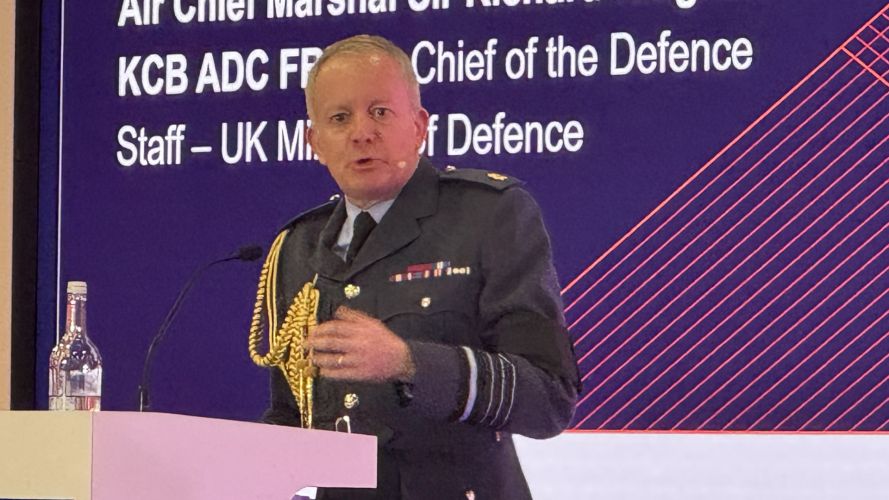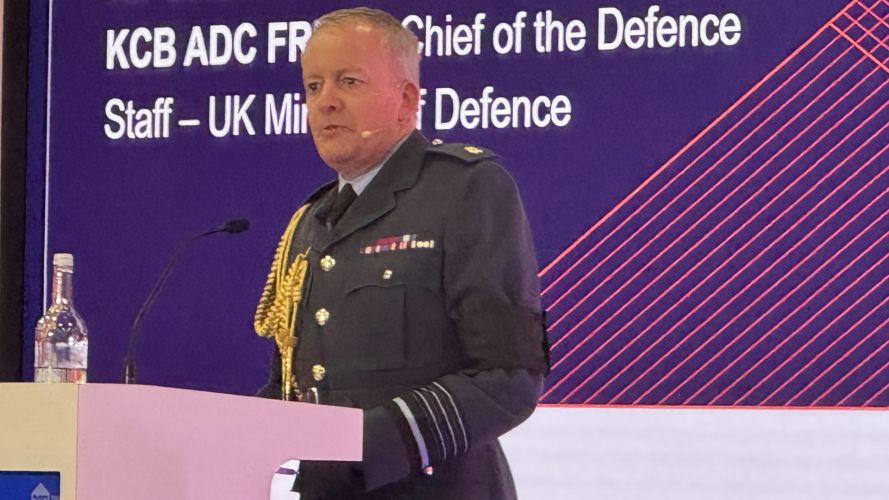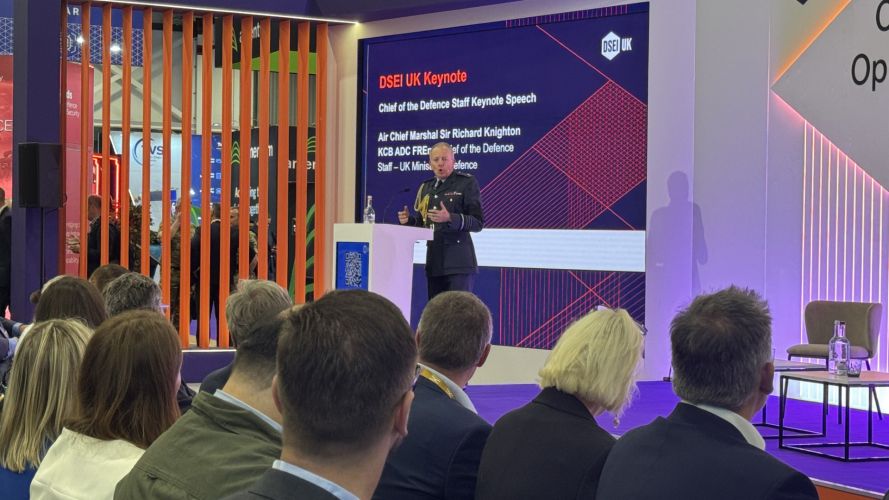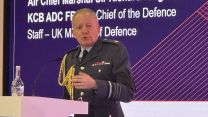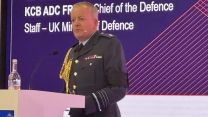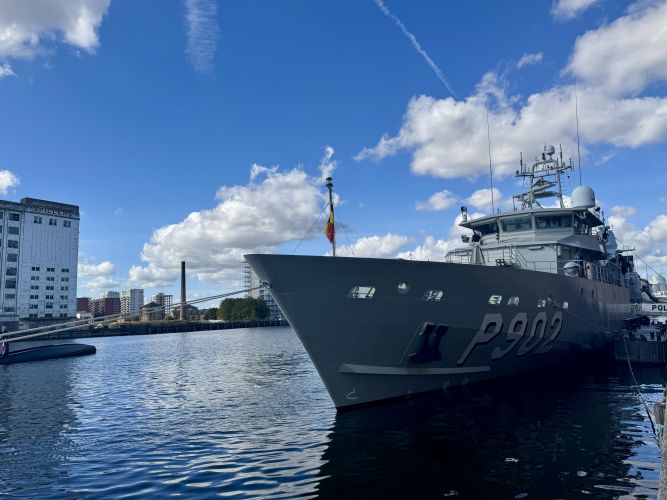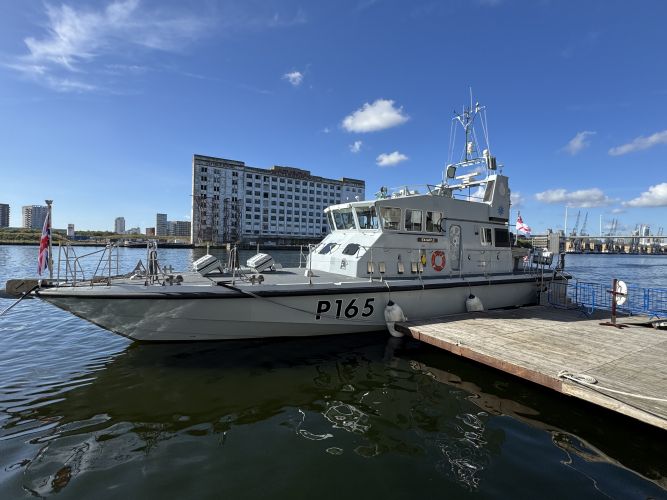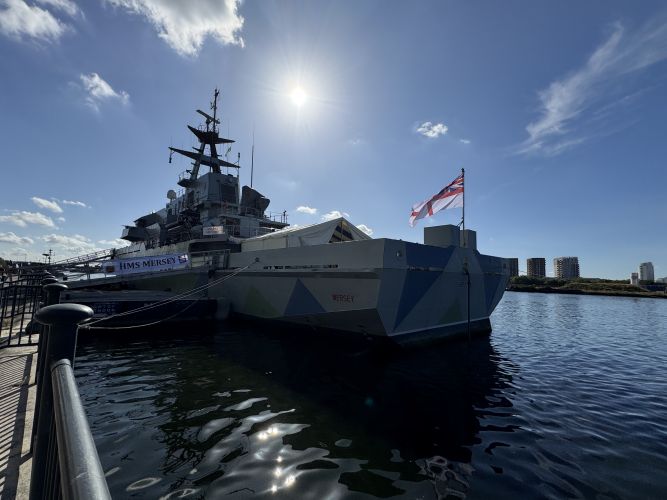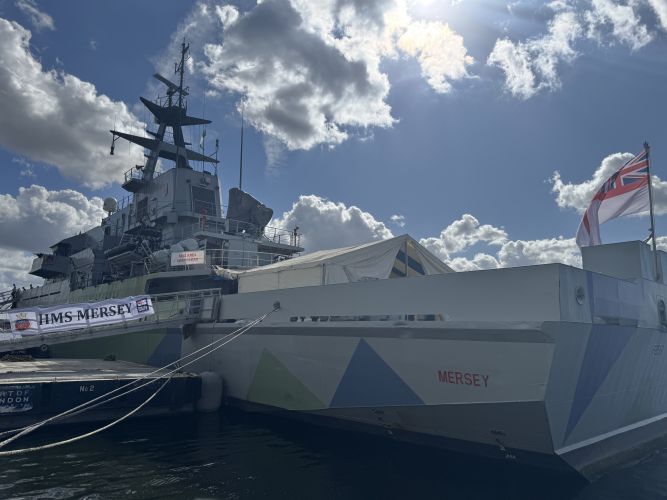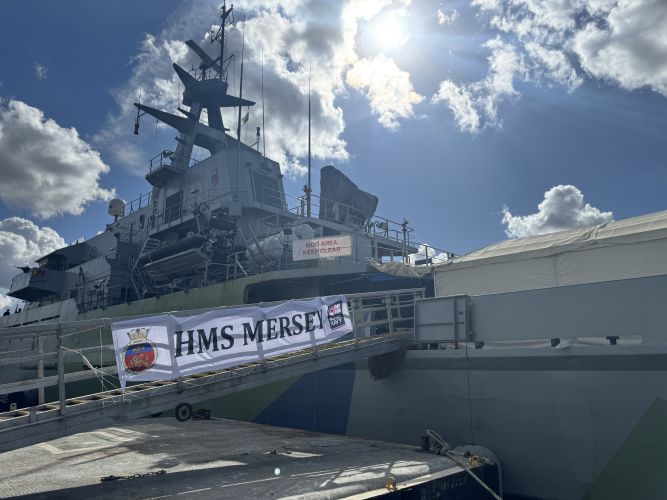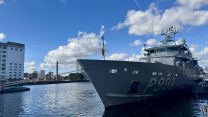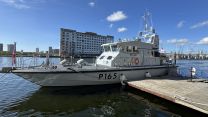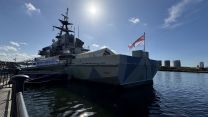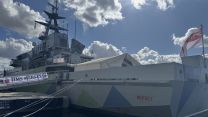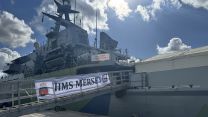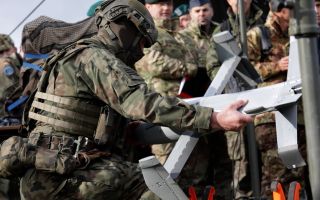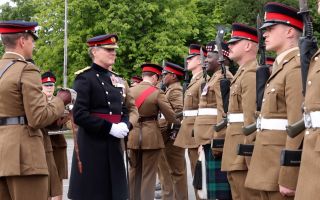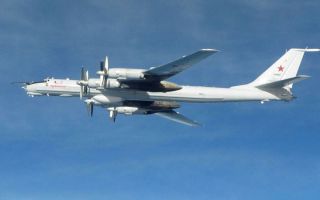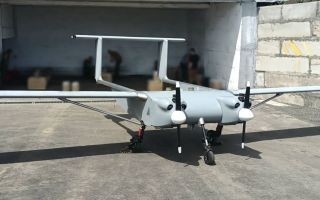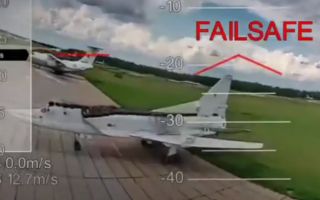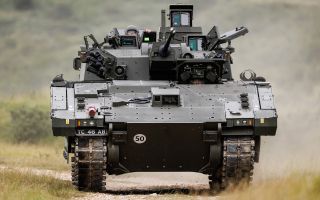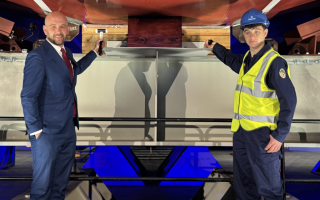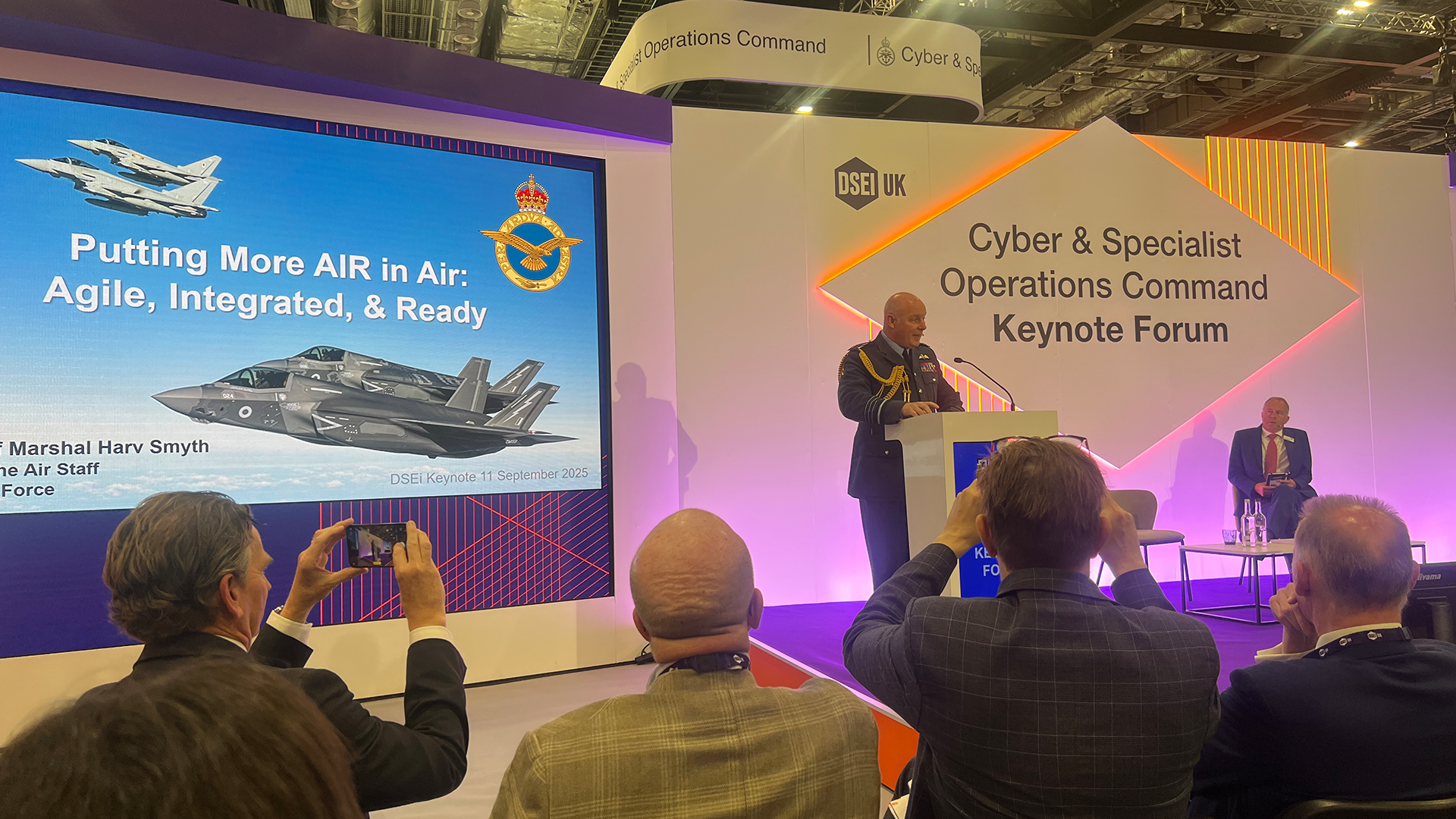
New CDS, CAS and First Sea Lord deliver inaugural speeches at tech-focused DSEI 2025

This year's DSEI conference was jam-packed with inaugural speeches from senior figures new to their roles, including the Chief of the Defence Staff, Chief of the Air Staff and the First Sea Lord. Each set out their vision for the future of the armed forces, which had innovation at their heart in an effort to improve readiness and counter escalating threats in global security.
Take a look back through our coverage of the event, including highlights from each of the speeches and displays of top tech.
The UK stands firm in support for Poland, Defence Secretary says
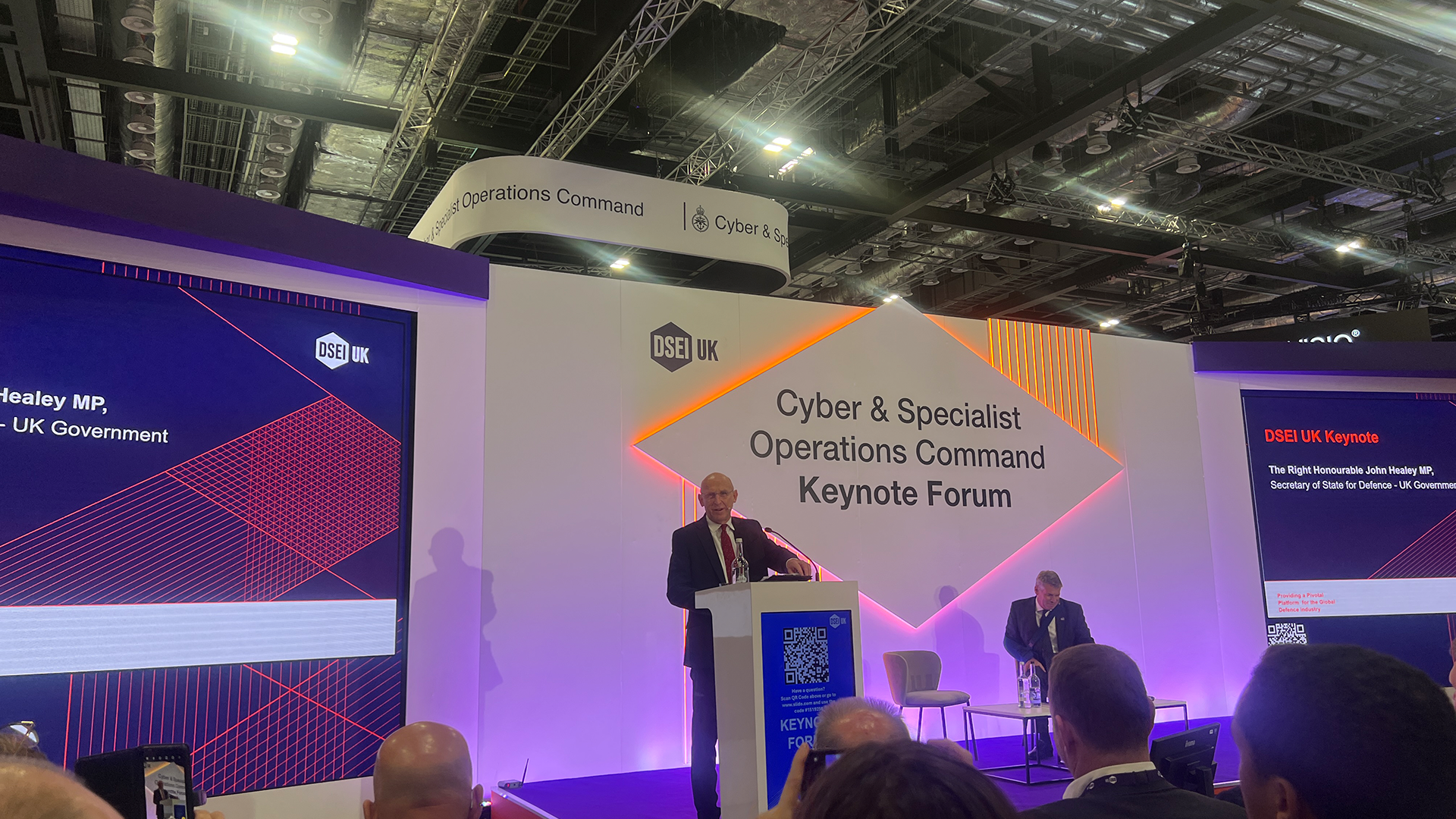
Defence Secretary John Healey gave the DSEI audience a very real reminder of the dangers their industry is countering when he described the earlier incursion of Russian drones into Polish airspace as a "dangerous escalation".
Mr Healey said Vladimir Putin had taken his hostility to a new level and described Russia's actions as "reckless, unprecedented, and dangerous".
At least three Russian drones were shot down by Polish and other Nato aircraft in Poland's airspace during overnight attacks on Ukraine early on Wednesday.
Mr Healey said he had directed the Armed Forces to look at options on bolstering Nato's air defences in Poland. He also reaffirmed the UK's steadfast commitment to both Poland and Ukraine.
The bomb disposal robot that can replicate the movement of the user
Defence firm L3Harris showcased its latest bomb disposal robot.
The T4, has just reached the initial operating capability threshold, meaning the UK is using the robot in explosive ordnance disposal.
The machine is strong, as it can lift 50kg, and has a very long arm.
Personnel who used the last version will be able to use it with very minimal training.
The robot has a feature that allows it to copy the movement of the user who is operating it.
"The way that it works is that as the operator moves their hand, the robot will mimic their movement," Dr Paul Bosscher told BFBS Forces News as he walked around it.
Small ship, big event
One of the Royal Navy’s smallest ships had one of the best views available on the Thames as state-of-the-art uncrewed surface vessels were showcased on the water.
HMS Example, an Archer-class P2000 fast patrol boat, is 20 metres long and sails at 20 knots. She is used to teach students all the way up to operational standards.
"Coming from big ships onto this [HMS Example], this is definitely a lot of fun," Chief Petty Officer Max Groose said.
Air Chief Marshal Harv Smyth: We need to be more agile, more integrated, more ready to fly and fight

In his first keynote speech as Chief of the Air Staff, Air Chief Marshal Harv Smyth spoke of the "phenomenal" pace of change and challenges in global security, describing the modern era as "the most perilous period in the whole of my 35-year military career."
"My prime focus as the new CAS is to meet this pace of change head on by putting more air into air, more agile, more integrated, more ready to fly and fight - today, tomorrow and together," he said.
ACM Smyth said air and space defence would be key in the future, describing it as "the nation’s first line of defence and the integrated forces' quickest means to strike."
He concluded by stressing the need to balance investment in cutting-edge technologies, while maintaining an essential focus on people, infrastructure and enablers.
"We cannot be seduced away from these foundational areas by new shiny equipment programmes," he said.
Military must be ready to deter, fight and win, Chief of the Defence Staff says
In his first public speech as Chief of the Defence Staff, Air Chief Marshal Sir Rich Knighton has said he will focus on the military’s readiness, its people and the modernisation of the Armed Forces.
"All of that is in service of our first duty in defence, which is to be ready to deter, fight and win," ACM Sir Rich told a packed room at DSEI.
He said the Armed Forces needed to be quicker to modernise, drawing on lessons from the Ukraine war.
"The need for speed - I don’t want to sound too Top Gun - this pace of adaptation will be of critical importance to our Armed Forces and of critical importance to me during my time as CDS," he said.
Inside the Army's battlefield medicine plans: Ketamine, dried plasma and a mobile surgical unit
The Army is rethinking how it treats injured personnel on the battlefield, with new pre-hospital programmes demonstrated at DSEI.
Brigadier Huw Thomas, a senior Field Army medic, explained the rollout of Nato-standard Tactical Combat Casualty Care training across the force.
Every soldier will complete a full day course, and be equipped with an individual first aid kit including a "combat pill pack" containing antibiotics and pain relief to be used at the point of injury.
Combat medical technicians will also have access to Ketamine and dried plasma for use on the battlefield.
More advanced training is also being introduced for combat lifesavers, including skills such as needle decompression for chest wounds.
Robot dogs and VR headsets among kit on display
BFBS Forces News reporters down at DSEI have been checking out all the new kit being showcased at this year's show, which is heavily focused on technological innovation.
Autonomous vehicles and devices are particularly prevalent, including the GO2 robot dog, which is capable of delivering supplies to the frontline.
New advanced unmanned surface vehicle unveiled
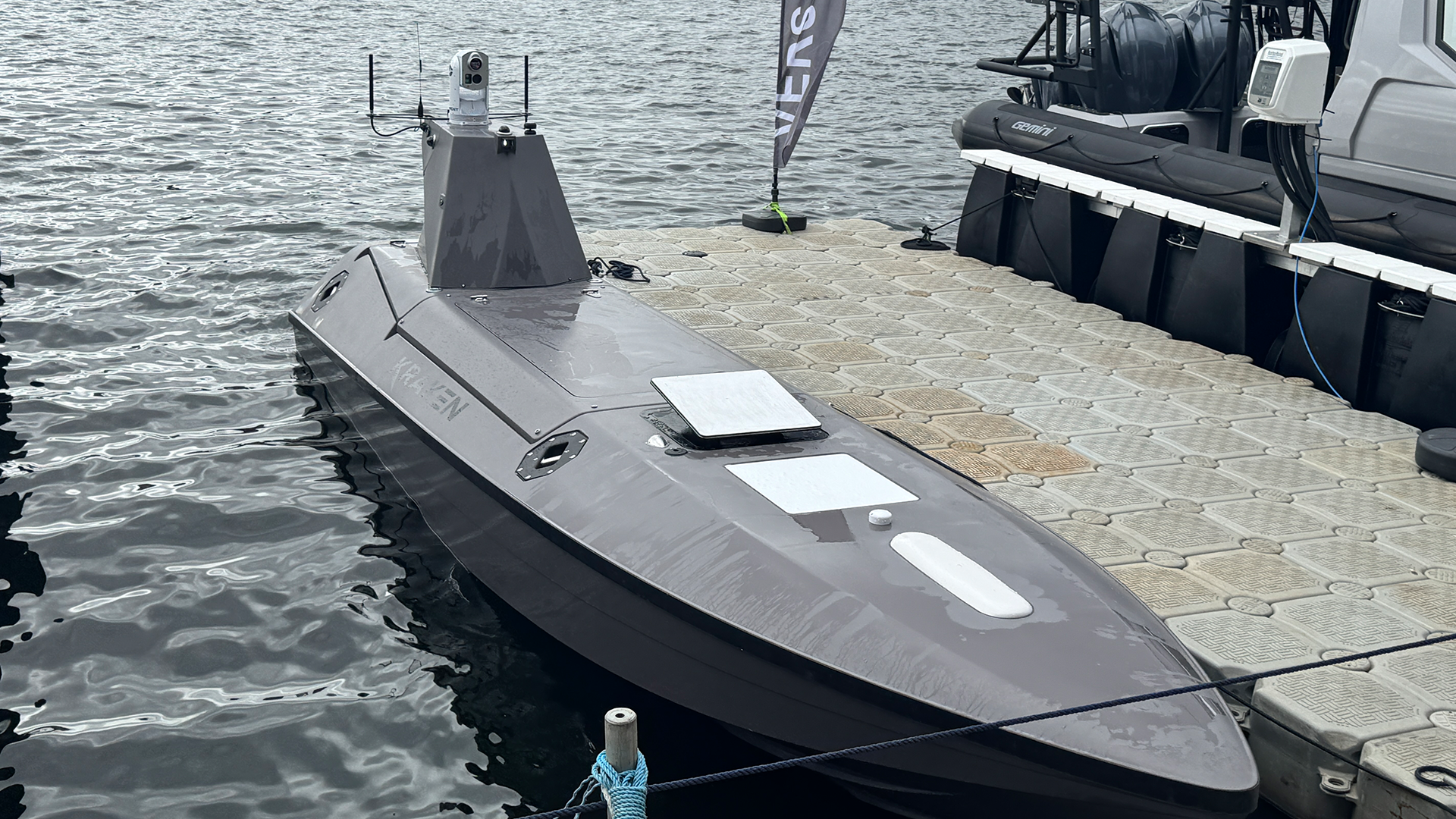
Waterborne demonstrations at DSEI continue with the Kraken K3 Scout, a new low-cost, low-signature, high-performance autonomous unmanned surface vehicle.
With a top speed of 55 knots, a 650 nautical mile range and a 600kg payload weight, the vessel serves a wide range of purposes for UK forces, ranging from long range intelligence, surveillance and reconnaissance (ISR), to advance strike and close-range fleet protection.
The Kraken K3 Scout is already in service with multiple allied nations and will provide vital mass for the UK Armed Forces, while reducing the risk to personnel at sea.
UK Defence has unprecedented opportunity for growth, says National Armaments Director
National Armaments Director Andy Start told the audience at DSEI there is "pace and energy in defence that is unlike anything I have witnessed".
"The threats are really sizable but the opportunities for growth are unprecedented," he pointed out.
However, he also warned of "tough choices" for the future of defence, adding that to succeed, the UK must "disrupt our own tech".
As National Armaments Director, Mr Start oversees teams responsible for developing, delivering, sustaining, housing and harbouring the UK's national arsenal and defence estate.
Pollard: I'll scrap stupid rules

Defence Procurement Minister Luke Pollard had some harsh words for the Ministry of Defence, telling the DSEI audience that the MOD is too slow and needs to change.
Mr Pollard also said that there were "stupid rules" in every part of Defence, and called on the defence industry to tell him which of those rules are getting in the way of them doing their jobs.
He concluded with remarks on his new portfolio, saying: "We are not at war, but we are not at peace any longer, so that means procurement needs to change."
Royal Navy will be ready for war in the next four years, First Sea Lord says
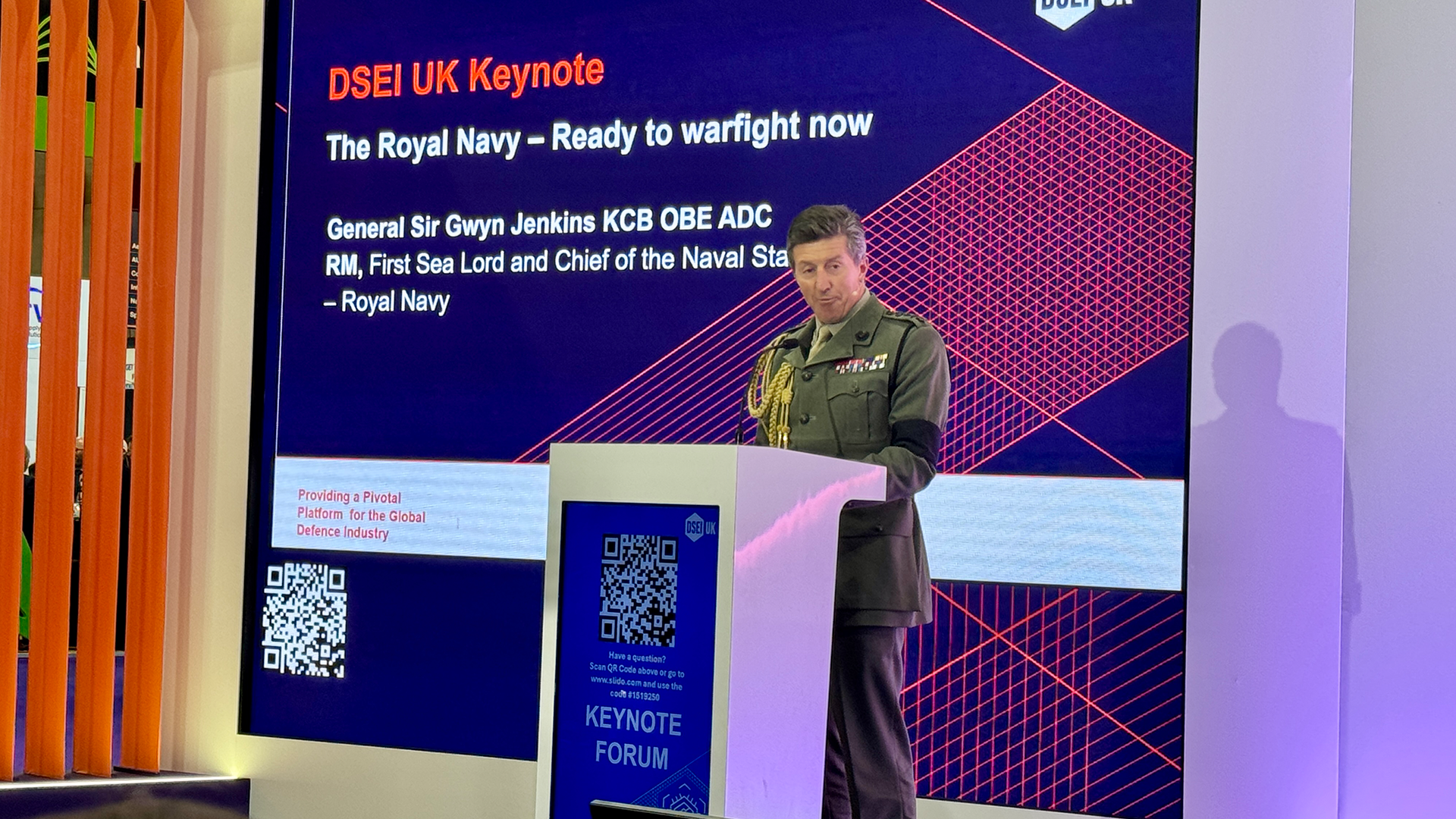
In his first public appearance since taking on the role as First Sea Lord, General Sir Gwyn Jenkins set out his vision of the creation of a hybrid fleet of crewed, uncrewed and autonomous systems, digitally connected but widely dispersed.
Discussing the Type 26 Frigate, he said it was the "most advanced anti-submarine frigate in the world", which will be joined by two uncrewed escorts that utilise AI to provide a three-ship task group, adding to the parent ships' sensors and decoy capabilities.
Additionally, he said the Royal Navy would have a hybrid airwing by the end of the decade, and when the Carrier Strike Group returns to the Indo-Pacific, its carrier air wing would be "unrecognisable," with a fusion of crewed and uncrewed platforms optimised for speed, survivability, adaptability and combat power.
The Beast and the Orca make waves at DSEI
Two new fast craft have hit the waves at DSEI. Berthon showed off the Gemini Waverider 1060p, nicknamed "the Beast" - a 10.6-metre rigid inflatable designed for defence and enforcement work. The boat was fitted with the OpenSea360 mission system, which brings radar, navigation and sensors together on one screen, making it easier for crew to make decisions.
From Denmark, CPH Group revealed the 13-metre Copenhagen Orca, a carbon-fibre interceptor capable of more than 40 knots and weeks at sea. The high-speed interceptor can be used for patrol, survey and attack missions. True to its name, its sleek silhouette in the water resembles a killer whale.
In pictures: Royal Marines band performs at DSEI
Always first to face the danger: General Sir Jim Hockenhull pays rare public tribute to Special Forces
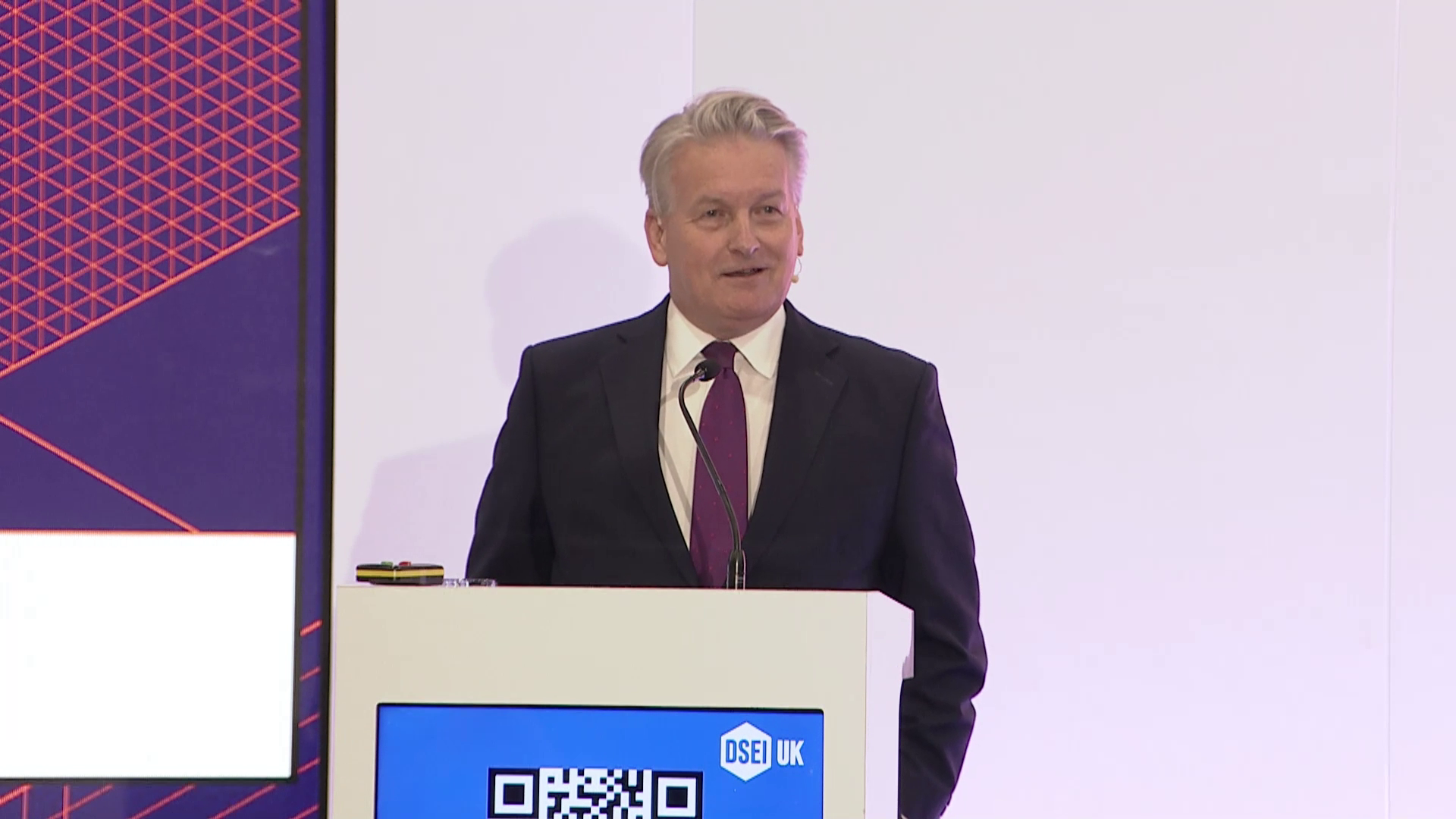
General Sir Jim Hockenhull has taken the unusual step of publicly commending and paying tribute to the UK's Special Forces.
Speaking for the first time as Commander of the newly-formalised Cyber & Specialist Operations Command, he told attendees at DSEI: "I want to pay tribute to our Special Forces, Her Majesty’s Government’s special vanguard.
"They represent the very best of us - we ask remarkable things of them and they deliver again and again.
"Their contribution to the UK here and abroad is multi-faceted, innovative and always decisive."
Gen Sir Jim also described the SF as "always first to face the danger."
Drones come of age, but traditional forces are irreplaceable, DSACEUR of NATO says
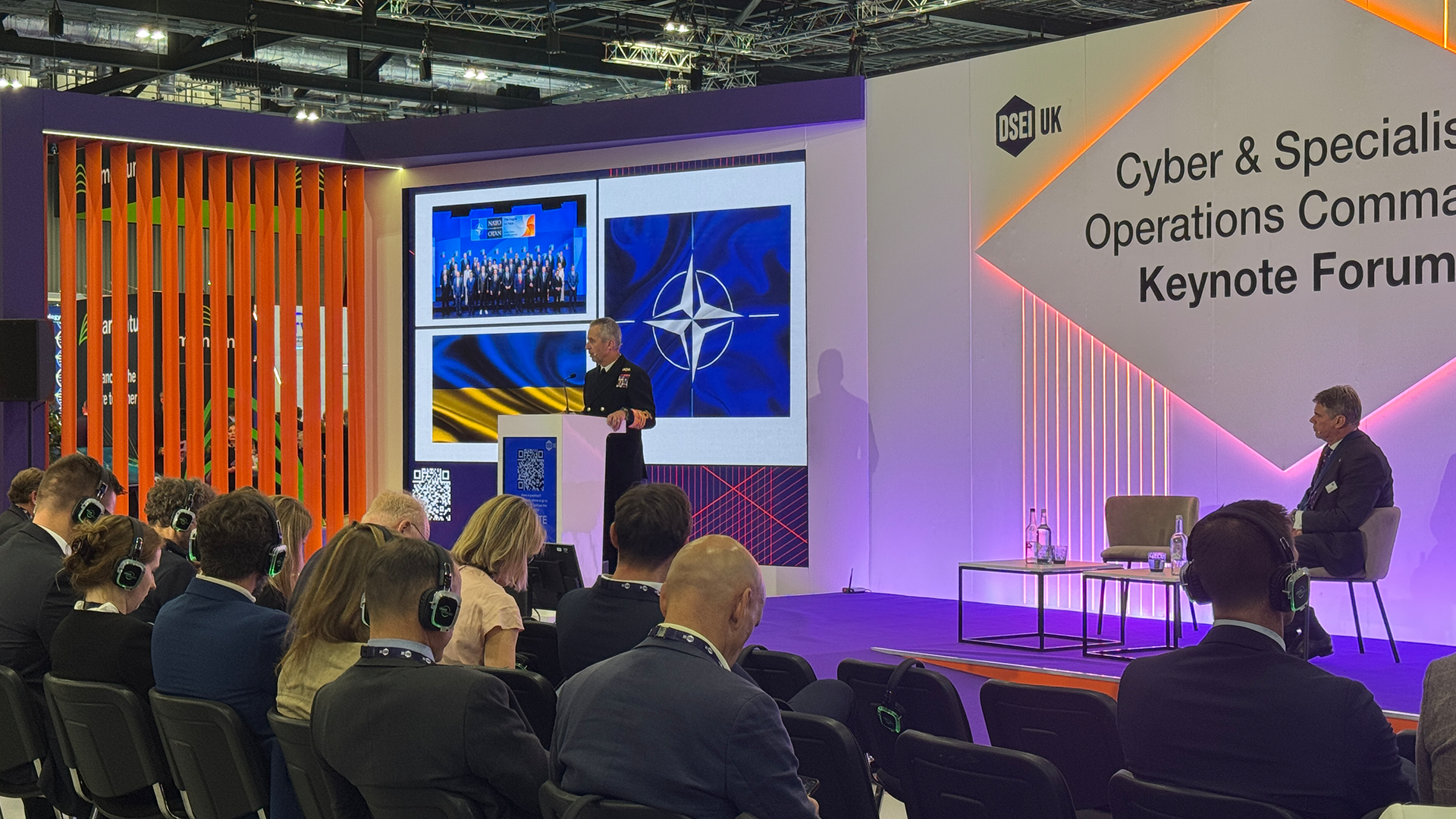
During his address at DSEI 2025, Admiral Sir Keith Edward Blount referenced a "coming of age" of drones and uncrewed systems but said that infantry and artillery are still irreplaceable.
"This [Ukraine] war has seen remote and autonomous of various types operated at a scale not seen before, and that development of that scale has not been linear, it has been absolutely logarithmic," he said.
"Whether for surveillance, reconnaissance, loitering munitions, swarms of various sorts, precision targeting, they are all prevalent – and mass is the watchword."
In 2023, Ukraine made around 800,000 drones, but this year, that number is expected to reach five million.
"Drones are conducting resupplies, medical support, casualty evacuation as well as direct attack.
"In Ukraine, 80% of Russian casualties are as a direct consequence of uncrewed systems," he told the audience.
However, Adm Blount also stressed the enduring value of artillery and infantry.
"27,000 artillery rounds are being fired everyday by Russia. This human dimension remains completely irreplaceable.
"Algorithms will not hold ground - infantry are essential," he said.
Fuchs set to put enemies on the run thanks to new missile variant unveiled at DSEI
The Fuchs armoured personnel carrier has been given a new role as a tank destroyer and air defence vehicle thanks to a link-up between Rheinmetall and Lockheed Martin.
The Fuchs (Fox) JAGM, which was unveiled to audiences at DSEI, sees the basic German Transportpanzer equipped with either 24 vertically launched AGM-179 Joint Air-to-Ground Missiles (JAGM) or AGM-114L Hellfire Longbow guided missiles.
According to its manufacturers, the vehicle can detect and engage multiple threats on the battlefield at any time. It's said to be capable of engaging up to 24 battle tanks, as well as air targets in rapid succession without the need to reload.
The Fuchs Evolution, the latest version of Rheinmetall's battle-proven and reliable 6x6 armoured transport vehicle, serves as the carrier vehicle for the missile system.
In British Army service, the Fuchs is equipped with automatic systems and sensors for detecting nuclear radiation, as well as CBRN (Chemical, Biological, Radiological and Nuclear) agents and other toxic substances.
Band of the Welsh Guards plays Star Wars theme
The band of the Welsh Guards has been keeping crowds at DSEI entertained with some classic tunes, including the theme from Star Wars. They are located in front of German frigate Sachsen.
We will slash red tape to fuel innovation at wartime speed, defence minister says

Lord Coaker has said that cutting red tape is important to fuelling innovation at wartime speed during his keynote address to DSEI 2025 at Excel London.
He also said that he wants to grow exports and onshore defence jobs, as it is an engine for growth.
The defence minister wants to turn defence into an industrial superpower by 2035.
Later, in a question-and-answer session, he added that Ukraine must have enough weaponry to fight against Russia.
"I don’t want to read in papers, as I read a few months ago, that Ukraine had to retreat at one point [because it] didn’t have guns and bullets to fight with," he said. "We have to be able to ensure that our Armed Forces or friends and partners and those we support have the ability [to] fight if necessary."
In pictures: HMS Mersey among vessels attending DSEI 2025
HMS Mersey, HMS Example and the Belgian vessel BNS Pollux are among the vessels pictured so far at DSEI 2025. HMS Iron Duke was originally due to attend the event, but was unable to reach Excel London, where DSEI is taking place, due to silt in the Thames.
Our full rundown of all the visiting ships that will be present at DSEI over the course of the week is available to read here.
